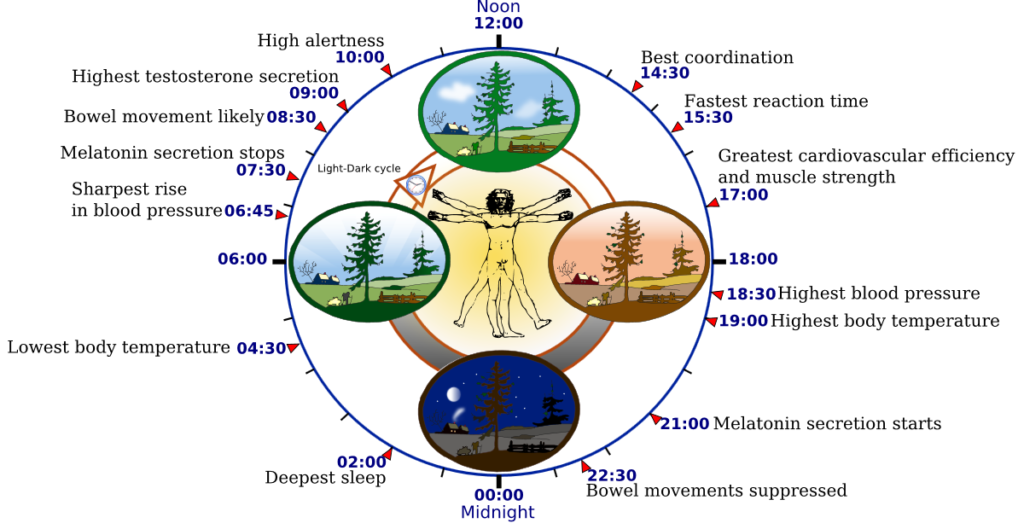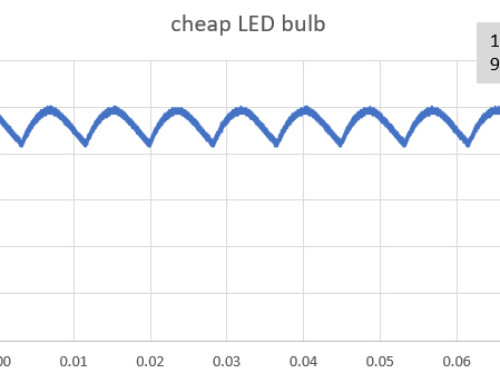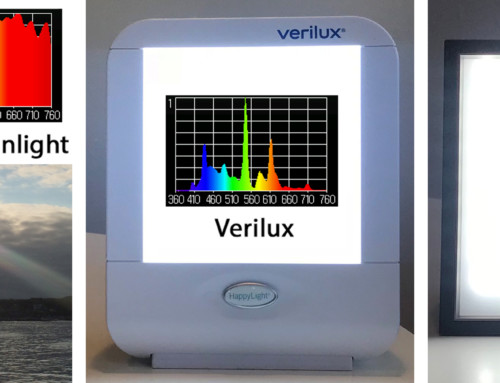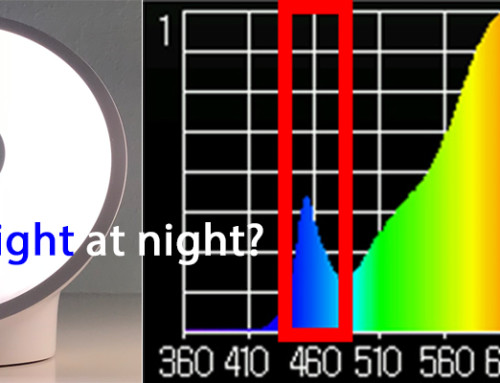Humans, plants and animals have internal clocks which are synchronized by the daily cycle of light and dark. In October 2017 the Nobel Prize in Medicine was awarded to three researchers for their work on the underlying mechanisms which govern the internal clock of living organisms. Sir Paul Nurse (a prior Nobel Laureate) said it well: “Every living organism on this planet responds to the sun, all plant and animal behavior is determined by the light-dark cycle. We on this planet are slaves to the sun. The circadian clock is embedded in our mechanisms of working, our metabolism, it’s embedded everywhere, it’s a real core feature for understanding life.”
Circadian rhythms are biological processes which cycle about every 24 hours and are used to anticipate and prepare for daily cycles of activity and recovery. Our internal clock helps regulate our energy, mood, sleep, and metabolism through changes in hormone levels, body temperature, and brain-wave activity. Research shows that these circadian cycles extend all the way down to individual cells, governing the cellular activity and repair cycles which underpin our health as well as some forms of disease. It is no accident that we are hungry or sleepy at certain times of day, this is our internal clock signaling that it is time to eat or sleep. Research also shows that our mental and athletic performance peaks at certain times of day. These circadian cycles are present in (almost) all living organisms and are a cornerstone of our health and wellness.

Some features of the our daily/circadian cycle (driven by our internal clock) – source: Wikipedia
Our internal clock is synchronized by the light/dark cycle of natural light. A third photoreceptor in our eyes effectively checks the time of day and adjusts our internal clock to keep it in sync with our local surroundings. Jet lag is the most obvious example of misalignment, and physicians recommend getting outside in the morning (and avoiding bright light at night) to adapt to a new time zone. Seasonal Affective Disorder (SAD) is another example of how insufficient light during the winter months can impact our health and wellness. Without bright/blue light during the day, and darkness at night, our circadian cycles become dysregulated, leading to poor sleep, low energy/mood and metabolic disorders. Extended periods of circadian dysregulation have been tied to weight gain and depression as well as elevated risk of chronic diseases such as diabetes and cancer.
Unfortunately artificial light sources do not provide the queues our bodies need to maintain our internal clock, and most of us spend too much time indoors. Without exposure to natural light we are stuck in lighting purgatory with insufficient light during the day to signal our bodies to be awake and alert, and too much light at night to signal that it is time to recover and sleep. Getting outside in the morning, and minimizing our exposure to artificial light at night is one of the best things we can do to maintain our energy, mood, metabolism, sleep and overall health. Thanks to recent advances in technology, a new class of ‘human centric lighting’ products are attempting to deliver many of the benefits of natural light. Beware of the marketing hype (caveat emptor), we are still in the early days of human centric lighting and not all of these products actually mimic natural light. Check out our our science page and other blog posts to learn more about the qualities of natural light which underpin our health and wellness.
Additional Reading:
Guardian article on the importance of our internal clock and the Nobel Prize
Article on the 2017 Nobel Prize for the mechanisms underlying our internal clocks






